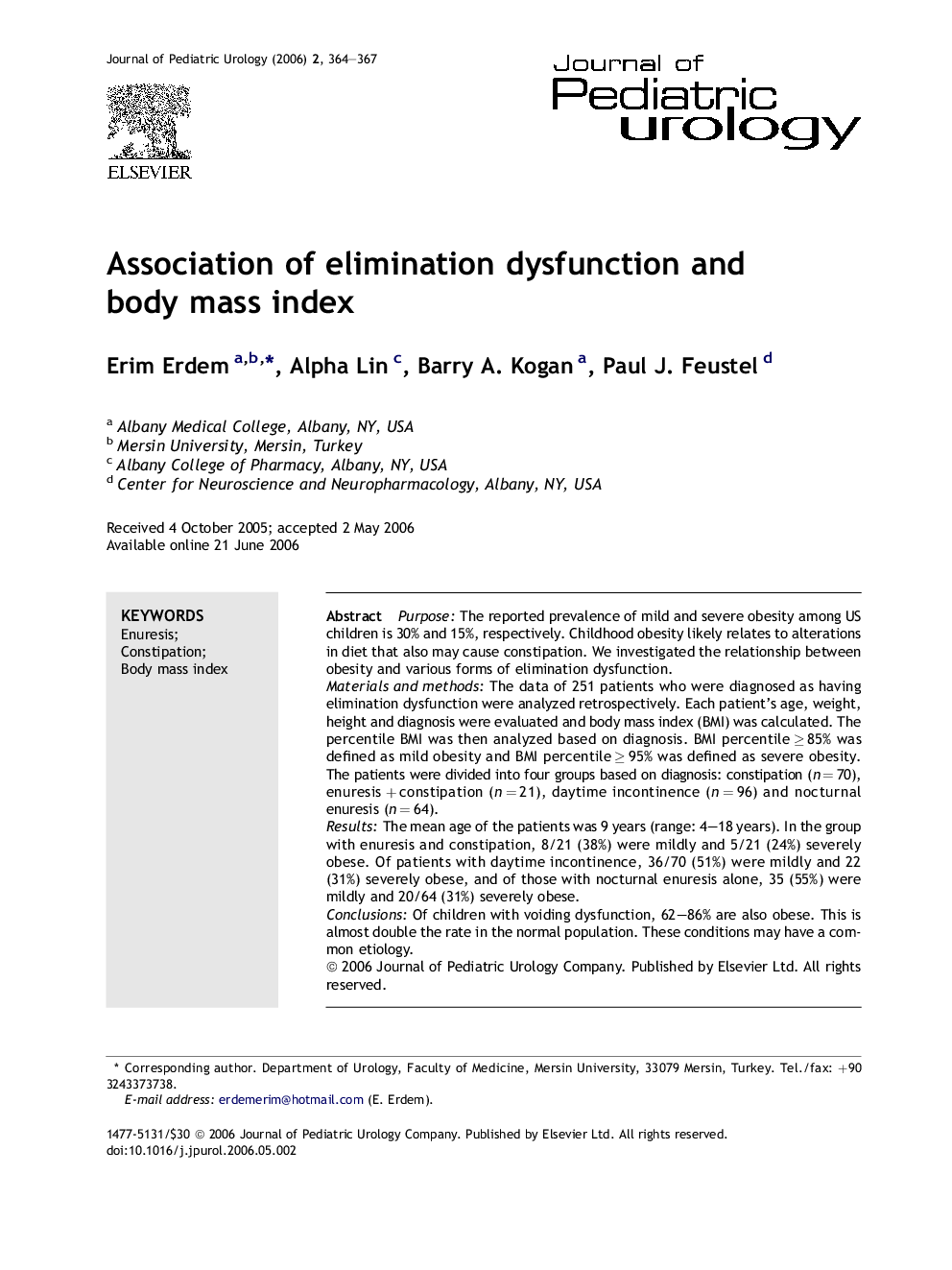| Article ID | Journal | Published Year | Pages | File Type |
|---|---|---|---|---|
| 4164008 | Journal of Pediatric Urology | 2006 | 4 Pages |
PurposeThe reported prevalence of mild and severe obesity among US children is 30% and 15%, respectively. Childhood obesity likely relates to alterations in diet that also may cause constipation. We investigated the relationship between obesity and various forms of elimination dysfunction.Materials and methodsThe data of 251 patients who were diagnosed as having elimination dysfunction were analyzed retrospectively. Each patient's age, weight, height and diagnosis were evaluated and body mass index (BMI) was calculated. The percentile BMI was then analyzed based on diagnosis. BMI percentile ≥ 85% was defined as mild obesity and BMI percentile ≥ 95% was defined as severe obesity. The patients were divided into four groups based on diagnosis: constipation (n = 70), enuresis + constipation (n = 21), daytime incontinence (n = 96) and nocturnal enuresis (n = 64).ResultsThe mean age of the patients was 9 years (range: 4–18 years). In the group with enuresis and constipation, 8/21 (38%) were mildly and 5/21 (24%) severely obese. Of patients with daytime incontinence, 36/70 (51%) were mildly and 22 (31%) severely obese, and of those with nocturnal enuresis alone, 35 (55%) were mildly and 20/64 (31%) severely obese.ConclusionsOf children with voiding dysfunction, 62–86% are also obese. This is almost double the rate in the normal population. These conditions may have a common etiology.
